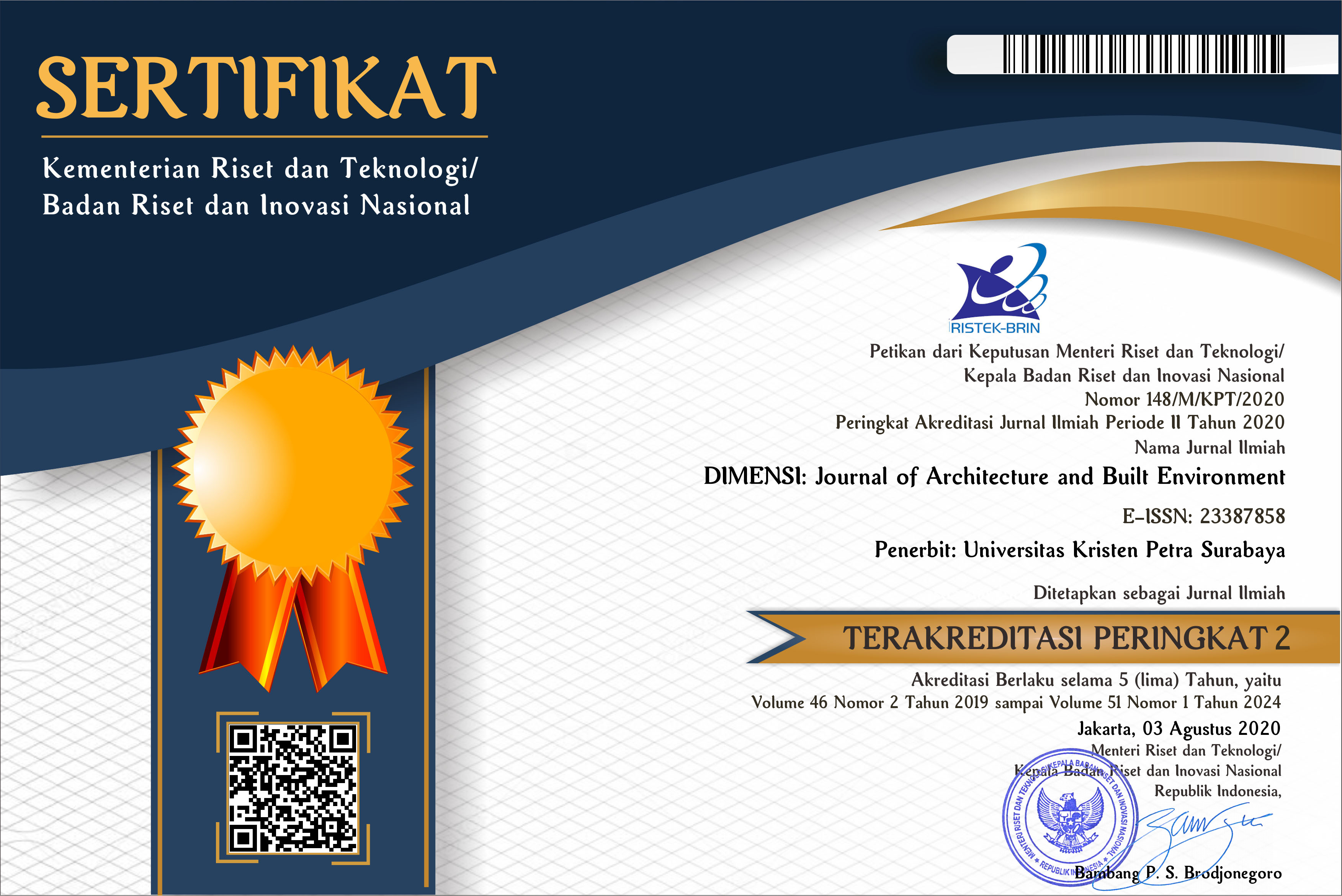STUDI TENTANG KONSEP TATANAN ARSITEKTUR TIONGHOA DI SURABAYA YANG DIBANGUN SEBELUM TAHUN 1945
 :
:
https://doi.org/10.9744/dimensi.39.2.101-110
Keywords:
Chinese architecture in Surabaya, Tiongkok, different order.Abstract
This paper intends to explore the spatial concept of Chinese Architecture in Surabaya which was built prior 1945. The arrival of Chinese people decades ago brought along diverse culture that permeates the local Indonesian culture and once the Chinese settled down, the on-going cultural dialogue started to influence the Chinese in return. Most importantly, this cultural exchange process allowed the Chinese to introduce their own spatial architectural concept, which seems prescriptive, that applied to all buildings typology, starting from house, temple and the palace. In Surabaya context, the Chinese fixed-prescriptive spatial architectural concept observed to deviate from norm. Hence, this paper intends to explore this phenomenon comparing Surabaya’s Chinese spatial architectural concept, represented by temples, prayer houses as well as houses built prior 1945 era, to the Chinese original spatial concept. This research hopes to conclude that the main difference between the two is the absence of light well which known as Tien Ching which was originally located in the middle of the building in all Chinese Architecture in Surabaya.Downloads
Download data is not yet available.
Downloads
How to Cite
J. Lukito, K. (2013). STUDI TENTANG KONSEP TATANAN ARSITEKTUR TIONGHOA DI SURABAYA YANG DIBANGUN SEBELUM TAHUN 1945. DIMENSI (Journal of Architecture and Built Environment), 39(2), 101-110. https://doi.org/10.9744/dimensi.39.2.101-110
Issue
Section
Articles
License
Authors who publish with this journal agree to the following terms:
- Authors retain copyright and grant the journal right of first publication with the work simultaneously licensed under a Creative Commons Attribution License that allows others to share the work with an acknowledgement of the work's authorship and initial publication in this journal.
- Authors are able to enter into separate, additional contractual arrangements for the non-exclusive distribution of the journal's published version of the work (e.g., post it to an institutional repository or publish it in a book), with an acknowledgement of its initial publication in this journal.
- Authors are permitted and encouraged to post their work online (e.g., in institutional repositories or on their website) prior to and during the submission process, as it can lead to productive exchanges, as well as earlier and greater citation of published work (See The Effect of Open Access).

















